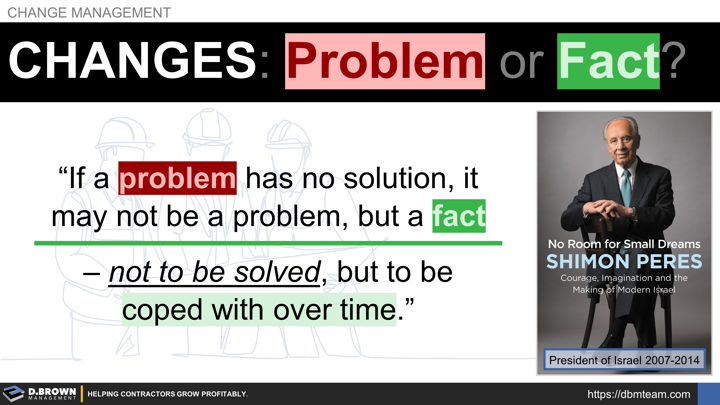This framing will impact your ability to mitigate changes, be compensated properly for changes, and to build long-term relationships with the extended members of the project team.
If you broaden your definition of changes to include material deviations from your planned execution of the work, then you will start to accept them as facts rather than problems.
“If a problem has no solution, it may not be a problem, but a fact – not to be solved, but to be coped with over time.” Shimon Peres - President of Israel 2007-2014
- Fact 1: Change will happen because projects are complex with changing requirements and conditions.
- Fact 2: Change impacts nearly everyone involved in the project. Understanding everyone’s perspective will help you navigate the process much more effectively.
- Fact 3: Relationships are valuable, with few things being more profitable for a contractor than recurring work negotiated with a select group of project owners.
- Fact 4: No one on the project set out to intentionally cause you additional work, so have a positive attitude.
The better you and your whole company become at coping with the fact that change will happen, the more competitive you will be at engaging early in the design process.

